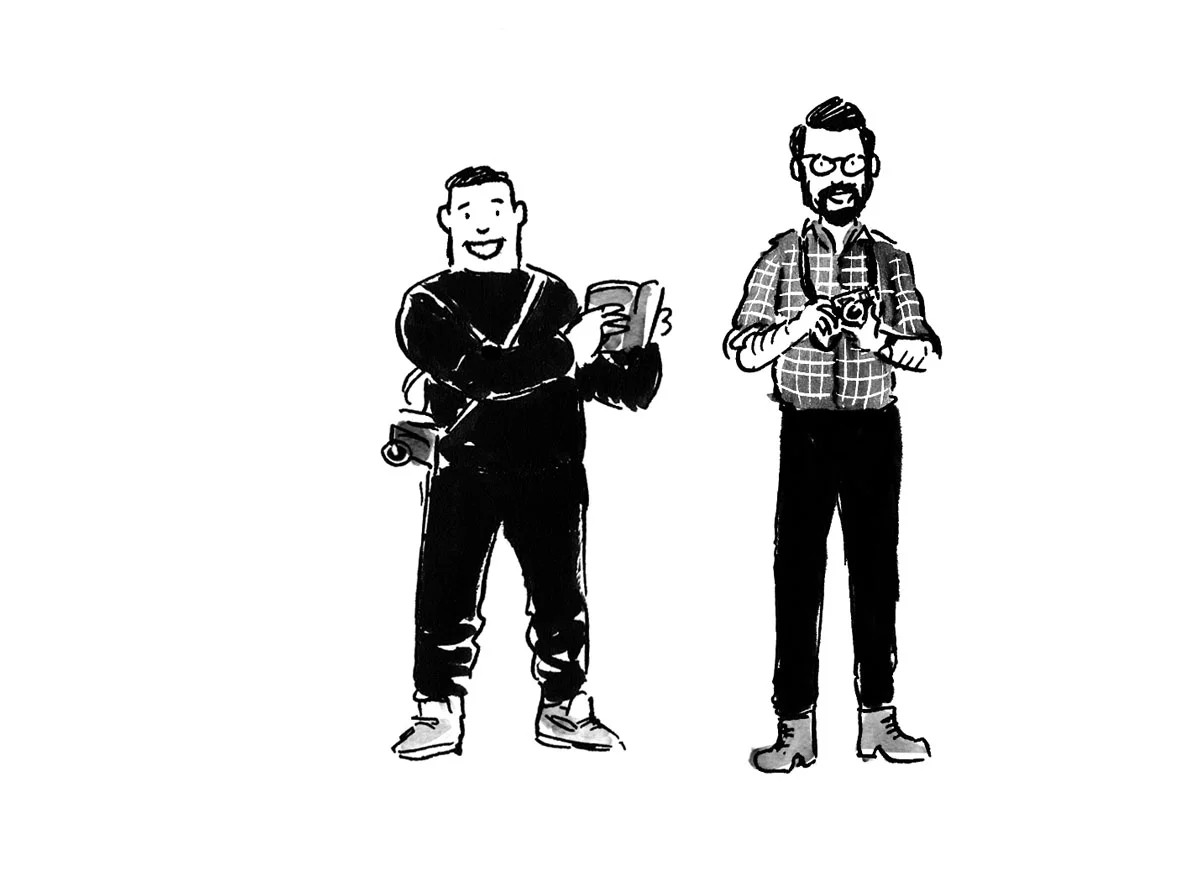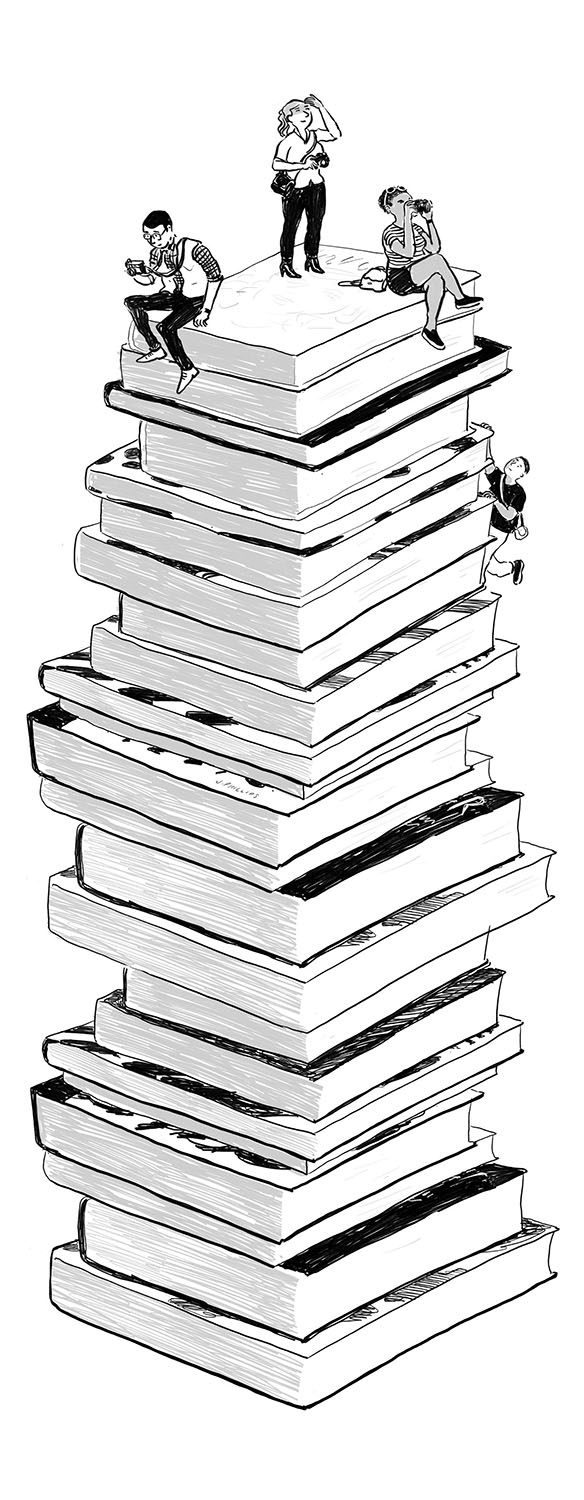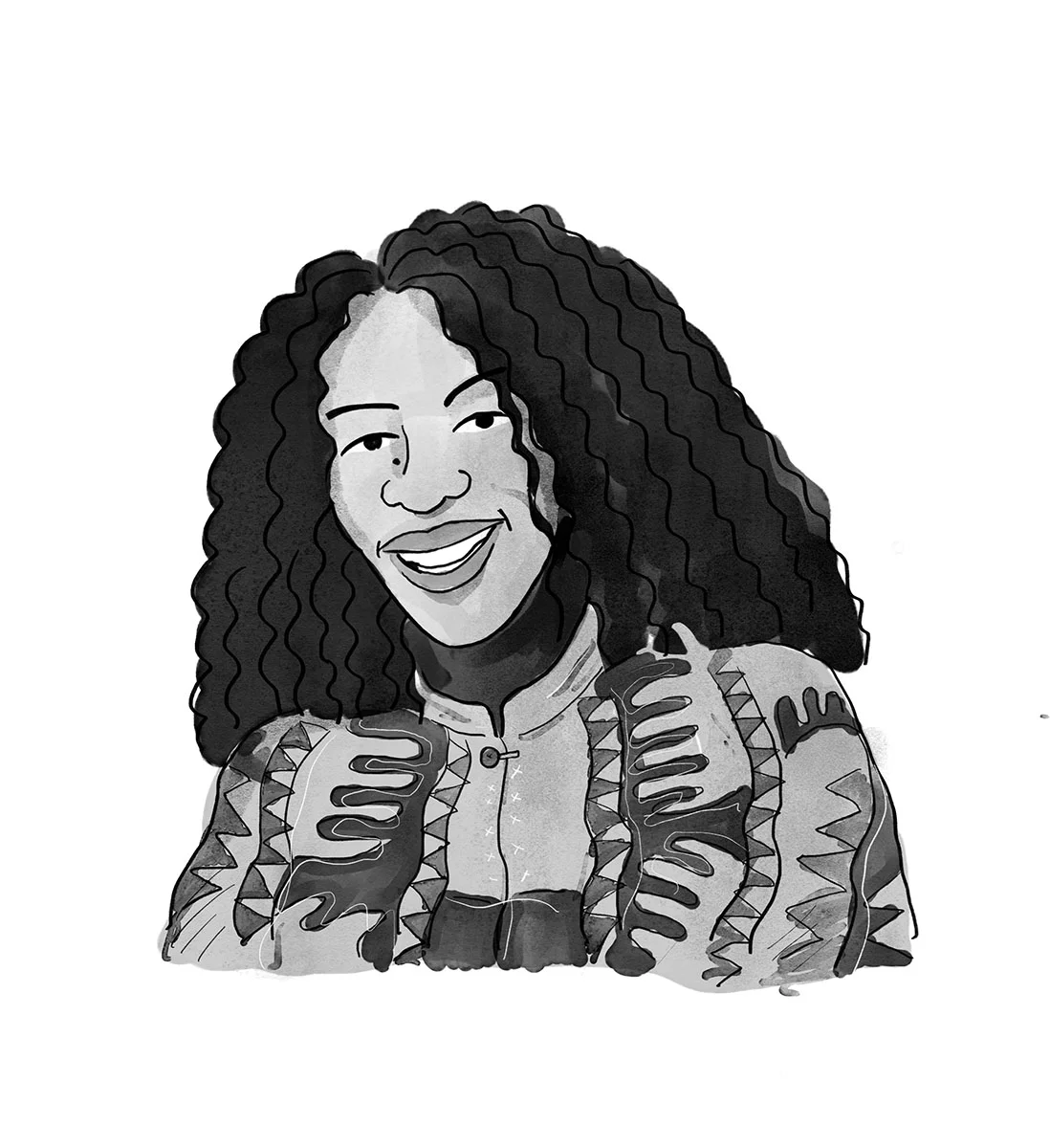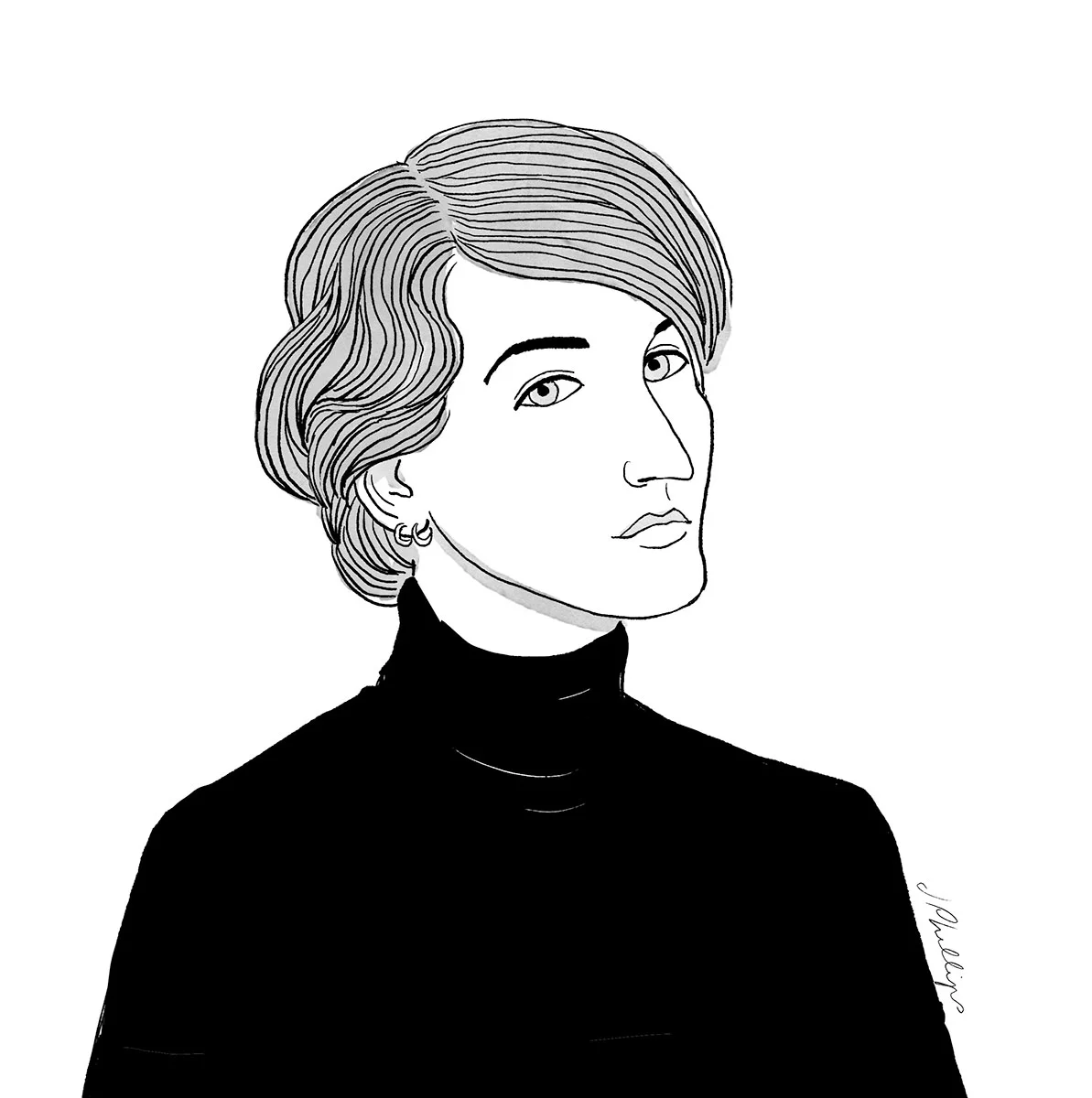A new weekly online series, The Observers, showcases photobook favorites from photography's most prominent (and thoughtful) figures.
For the past few years, #photobooks have been one of the biggest subjects of conversation in the art photography community and beyond. Where a few major publishers once dominated, the democratization of self-publishing has helped many photographers and aspiring publishers take things into their own hands.
And at the end of each year – Humble included – nearly every blog, online magazine, or click-hungry content marketing super-engine predicably saddles up to produce a best-of list. But what happens during the rest of the year? Do photobooks of years past float in digital purgatory?
Building on the traditions of platforms like 10x10 Photobooks, The Indie Photobook Library, and Aperture's quarterly in-print Photobook Review enters The Observers, a weekly digest of photobook recommendations from luminaries like Alec Soth, Lauren Greenfield, and Martin Parr. Launched earlier this year, it's led by Paul Jun, CreativeMornings' wizardly head of content who only recently came to photography, but has absorbed it like a sponge, photographer and curator Wesley Verhoeve, and illustrator Jeffrey Phillips who's responsible for all the images in this feature. Together, they channel a unique angle on the photobook, breaking up the annual listicles into quick, yet engrossing weekly highlights, and give a longer shelf life to recommended reading.
Midway through "season one," I spoke with Paul to get insights on his new journey in the photo world, and what inspired it all.
Jon Feinstein in conversation with Paul Jun
2/3 of The Observers: Paul Jun and Wesley Verhoeve– Illustrated by the other 3rd – Jeffrey Phillips
Jon Feinstein: How did this project get started/ how did you, Wesley and Jeffrey come together to collaborate? Where does the name come from?
Paul Jun: Where I work, there’s a co-working space that Tina Roth Eisenberg started called Friends Work Here. I met Wesley there and over the years we connected based on our love for photography, books, philosophy, music, and more. Also, when I was just starting to get into photography, I asked Wesley maybe a dozen questions every time I saw him, and he always responded with honesty and wisdom. It leveled up my photography and made me realize the power of surrounding yourself with kind, talented artists that are willing to help you.
One day, he asked me to lunch and shared this idea of a publication that featured photo books recommended by visionaries. What I loved about it was that I could tell he thought this through and trimmed all the fat around the idea. I loved the idea because it reminded me of writing: you read to grow your craft, to study the impact and flavor of beautiful prose. There’s only two ways to become a better writer, Stephen King reminded us in On Writing: “Read every day and write every day.”
Jon Feinstein: What happened from there?
Paul Jun: At that point in my own photography, I hadn’t thought about devouring photo books in this way, and it inspired me to treat the growth of my photography as I did with writing. I also scanned every photo blog and found nothing like what we had in mind.
The partnership was a match ready to be made: Wesley has over a decade of experience in photography, with connections and a deeper understanding of the photo industry. Plus, he enjoys cold emailing guests, whereas I’d rather not. I have experience in content, marketing, writing, and community building. And because I fell in love with photography, I felt this was a perfect opportunity to study the masters.
Lauren Greenfield's favorite photobooks include Jim Golberg's Rich and Poor, and Nan Goldin's The Ballad of Sexual Dependency. Illustration © Jeffrey Phillips
Feinstein: That's great. How did Jeffrey Phillips' role come about?
Paul Jun: When we started thinking about what it would look and feel like, we both agreed that having illustrations of our guests rather than their favorite headshot would create a unified look. We wanted something playful but elegant. I immediately thought of Jeffrey.
I worked with Jeff on the "Own Your Content" campaign that I did with CreativeMornings and WordPress.com. We met him two years ago when he first visited Brooklyn on a whim and arrived at Friends Work Here to spend a month working. Everyone in the space loved him—his kindness, art, generosity, and presence. A year later, he returned to Brooklyn for two months, and the basis of our friendship grew. I knew I would work with him on something someday. When we were putting together the Own Your Content campaign, we saw the possibility of working together.
The Observers name came from the values that we want to champion and cultivate in visual artists: empathy, patience, and observation. Nowadays, the culture of photography is fast-paced. We love what Instagram has done for photography and we also feel strongly that photographers should compliment what they learn with photo books to get a deeper understanding of the fundamentals and masters that came before them.
Shaniqwa Jarvis's favorite photobooks include Nikki S. Lee's Projects and Andrea Kirsh's Carrie Mae Weems. Illustration © Jeffrey Phillips
Feinstein: There's been a renewed interest in the photobook over the past 5-10 years. What do you think prompted this?
Jun: Photography is experiencing the same kind of change that writing did 10-15 years ago.
Before blogs, being a writer meant being a journalist or an author. There were no bloggers with platforms that could amass thousands, sometimes millions, of readers. The internet and blogs fundamentally changed the landscape of writing, ushering in self-publishing, a platform to convey your ideas, and being able to establish a voice in a domain to grow one’s reputation and career. It’s amazing. You even see poetry gaining interest because they’re now 1x1 images on Tumblr or Instagram. I was incredibly lucky to begin my career as a writer when all of this was unfolding.
It’s quite possible the interest in photo books are tied to the explosive growth of photographers around the world. iPhones were the change agents that caused this, the same way Blogger or TypePad opened the gates. Then DSLRS and mirrorless cameras became way more accessible in terms of price and learning curve. I think the allure of being a photographer has changed too, for good and for ill.
Pete Souza's favorite photobooks include Henri-Cartier Bresson's The Decisive Moment and Betty C. Monkman's The Living Whitehouse. Illustration © Jeffrey Phillips
Feinstein: How do you go about selecting the specific "visionaries" to participate?
Jun: For our first season, we started with the people we truly loved. Wesley had so many ideas because he was in this world for over 10 years, whereas I was just discovering these names. For me, it felt like picking up a trumpet because of pure curiosity and then hearing Miles Davis for the first time. I didn’t know of Cartier-Bresson or Platon or Helen Levitt. I was reveling in all of these artist’s works, had dozens of tabs open on my browser, and spent more time studying their portfolio than thumbing Instagram.
We also look at them as a human being—what do they stand for, what do they care about, and who are they trying to change? There are too many popular voices and not enough of the unheard voices that are doing truly important work. So many of our guests don’t have a million followers on Instagram. They don’t have the prettiest, curated feeds; they aren’t even verified. And yet, they aren’t struggling to get work and their overall life’s work has far deeper meaning than numbers on a platform they do not own.
We want our readers to realize that those things don’t have as much weight as culture ascribes to them. We need to go deeper and that involves studying their body of work and possibly the photo books they put out into the world.
Alec Soth's favorite photobooks include Masahisa Fukase's Ravens, and Larry Sultan's Pictures from Home. Illustration © Jeffrey Phillips
Feinstein: From your work leading content at CreativeMornings to your own photography – and now The Observers – you wear a million hats. How do you balance it all? Is there any overlap between projects?
Jun: Well, the real talk is that I don’t go out much and I’ve become content with that; in fact, I prefer it. If I watch TV, it’s one show and I finish it in a week. And above all, I truly love all of the work that I am doing; I think I’m very lucky (to have met Wesley, to have picked up photography at this time, to be in a space like Friends and CreativeMornings) and never take for granted the privilege that comes with serving others.
Spending a whole day doing street photography on a Saturday, only to come home, put on some music, and edit photos until midnight, to me, is a day well spent. Then working on The Observers on a Sunday, setting up meetings during the week to talk to people who’ve built successful publications and getting feedback—what else would I be doing?
I cannot commit to something if there isn’t overlap in what I stand for and the work I want to create. CreativeMornings, The Observers, my blog, my books, work at the altMBA, any consulting that I do—at the core of it all, it’s about helping people, whether through storytelling or bringing people together.
Ultimately, if I have to boil it down to one thing, it’s about flow state. Does this work put me into a state of flow? Do I lose a sense of time because I am enjoying it so much, because it’s deeply meaningful? It’s about opportunity cost: what would I be doing instead that’s contributing to my mission? That’s my compass.
Nadine Ijewere's favorite photobooks include Malick Sidibé's La Iew en Rose, and Viviane Sassen'sIn and Out of Fashion. Illustration © Jeffrey Phillips
Feinstein: With so much "content" being produced daily – especially related to photography – how do you see the Observers as standing out?
Jun: For the Own Your Content campaign, I learned from the remarkable creatives that I interviewed the power—and ultimately missing element in the content world—of context.
Alan Webber, the founder of Fast Company, described the difference between content and context in his CreativeMornings/Santa Fe talk, “Content is a commodity. Content is the digital equivalent of pig iron. Context seeks to explain what is going on in the world so that we can make sense of it. Context takes this commodity and transforms it into meaning.”
This will be the necessary skill for the future of content, and it’ll be difficult to achieve. It’s challenging to narrow down your idea for a specific group of people—their worldview, fears, doubts, and aspirations. You have to understand who your audience is, where they are at in their journey, and providing content that fits them like a tailored outfit–something Italian, and nothing off the racks.
Robin De Puy's favorite photobooks include Alec Soth's Songbook and Sanne De Wilde's The Island of the Colorblind. Illustration by Jeffrey Phillips
Feinstein: How does this all play out with The Observers?
The first season of The Observers showed us that this kind of work is missing in the photo community. At first, we didn’t know if there was a demand for this but was frustrated that nothing like it existed—most people don’t read books, so why would anyone buy an expensive photo book? Why would a photographer buy one book based on an artist’s work rather than follow 500 people on Instagram and have an endless feed of ideas? From the beginning, we agreed that if this didn’t resonate at the level we imagined, then we would stop.
Now that we’re earning trust and the feedback is beyond what we imagined, we want to stand out by creating projects that invite other photographers around the world—work that is important and beautiful. As much as this is an online publication, I know there’s power in in-person gatherings—photo walks, events, community-led projects, etc. We’re expanding our interviews for Season 2, asking photography related questions, so that it ties into the book recommendations. I don’t want this to be a white glove Amazon review site and our readers need more context into why they should listen to this particular person.
Every time a new content idea pops up, we pause and ask: How are we making this fit for this person, in this particular time? Where do they want to go and how are we helping them get there? And who exactly are we telling this story to? What context do they need or already have?
Today, photographers are seeking originality but often fall into buckets of banality, and a lot of that I believe is inspired by what they’re consuming. We’re all borrowing from each other—and from the masters—remixing concepts and ideas that are timeless. A nice balance between your phone and print, we hope, changes the energy within you that inspires you to shoot.
You create better art by tapping into your self. The legendary designer Milton Glaser said, “I believe that you convey your ideas by the authenticity of your being.” Every time you press the shutter is a possibility to better understand who you are. A photograph, I’m learning, is just a mirror to your inner world and the work of the photographer is inviting us into their world and showing us around, pointing at things they care about and having a reason as to why. If the photographer captured it well, the spirit, then we the viewers are forever changed—and we weren’t even in that physical space and time.
Andre D. Wagner's favorite photobooks include Roy DeCarava and Langston Hughes' The Sweet Flypaper of Life and Helen Levitt's A Way of Seeing: Photographs of New York. Illustration © Jeffrey Phillips
Feinstein: Has this project changed how you think about your own photography? If so, how?
Jun: Oh, man.
I now know that feeling of wanting to throw away all of your hard drives and start over. As a writer, I felt this, and have deleted old posts out of shame and self-doubt. Every time we got a confirmation from a new feature, Wesley sent me the link to their site. And down the rabbit hole, I went.
I am mesmerized by the images that exist and how important they are for memory and history, for culture and knowledge. Because writing was my first craft, I see the world with words. I scrutinize the words on a menu, copy on a billboard; I even became sensitive to tones in an email.
This project came at the right time, because as a beginner photographer, I was feeding into all of the bad habits of an amateur: checking Instagram after you post a pic and close the app; obsessing over lenses and camera settings; comparing myself to others to a fault; trying to emulate popular work like editing and style; and failing to understand the elements that make up an important, impactful photograph.
I am now being introduced to people who truly influenced culture and history, people that don’t call themselves influencers. It’s a kind of education that I wouldn’t have received without the project. It’s invaluable to me and the timing couldn’t have been better.
Holly Andres' favorite photobooks include Cindy Sherman's Complete Untitled Film Stills and Larry Sultan's Pictures From Home. Illustration © Jeffrey Phillips
Feinstein: What's your all-time favorite photobook and what was the last photobook that totally blew your mind?
I am obsessed with Joel Meyerowitz’s book Bystander: A History of Street Photography and Jill Freedman’s Resurrection City.
Freedman’s book is timely because of what’s happening in black communities in the U.S. and the rampant racism that exists. It’s heartbreaking, sometimes bone-chilling, when I look at these images and compare them to what I see on Twitter or newspapers. When I see a photo book like this, I am so grateful that these moments were captured. What bravery, what sensitivity, to know that photographing this moment was key. Maybe she didn’t realize how important it was going to be until after the fact; it seems a lot of photography is like that. Without these images, we’d know nothing. Words do not suffice in describing the past; we need to pair them with images to convey truth.
Martin Parr's favorite photobooks include Robert Frank's The Americans and Daidō Moriyama's Bye Bye Photography. Illustration © Jeffrey Phillips
Paul Jun is a writer and photographer. He is also the head of content for CreativeMornings and previously the community manager for Seth Godin's altMBA program. Find him at: [ website / instagram ]












